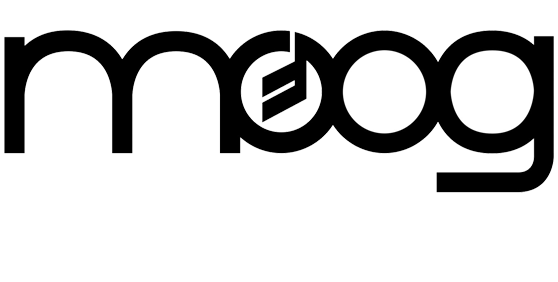Originally released in 1970, Minimoog Model D was the world’s first portable synthesizer and served as the archetype for all electronic keyboards that followed. The all-analog instrument gained acclaim for combining the colossal sound of the 1960s Moog modular synthesizers with the accessibility of pre-wired modules—meaning that it could be played instantly and intuitively with no patch cables required. It was quickly embraced by a diverse roster of performers, with artists like Herbie Hancock, Kraftwerk, Rick Wakeman, Sun Ra, Piero Umiliani, Giorgio Moroder, Bernie Worrell, and Gary Numan all shaping unique sounds and forging new musical genres using the instrument.
More than a half-century since its invention, Minimoog Model D is back in production at the Moog factory in Asheville, North Carolina. An exceptional sonic tool and one of the most beloved and iconic synthesizers ever designed, it returns to the hands of synthesists of all kinds and serves as inspiration for the next generation of electronic musicians.
The three-oscillator, monophonic, analog synthesizer is securely housed in a locally sourced Appalachian cherry cabinet and hand-finished aluminum chassis. Sounding as vibrant and deep as ever, its legendary low-pass ladder filter, powerful oscillators, and rich saturating mixer retain the exact component placement and through-hole design of a 1970s-era Minimoog Model D.
While no changes have been made to the original sound engine or audio signal path, the 2022 Minimoog Model D includes a series of popular functional modifications that expand this legendary instrument’s sonic capabilities. These modifications include a dedicated analog LFO with triangle and square waveshapes, a premium Fatar keybed with velocity and after pressure available via top panel CV jacks with onboard trimpots, MIDI integration, and a mixer feedback modification which allows the Minimoog Model D to overdrive and scream with the turn of a knob. And, for the first time in its history, the Minimoog Model D now features a spring-loaded pitch wheel with center deadband, allowing for improved playability and wild performance flourishes.
- NUMBER OF KEYS: 44
- KEYBOARD RANGE: F0 to C4
- KEYBOARD ACTION: Synthesizer (Spring)
- NOTE PRIORITY: (Low, High, Last): User Selectable
- SOUND SOURCES: 3x Oscillators, Noise Generator and External Audio Input
- OSCILLATOR FREQUENCY RANGE: 0.1 to 20 kHz (In Six Overlapping Ranges)
- OSCILLATOR STABILITY: (short term) > 0.25 %
- OSCILLATOR WAVEFORMS: Triangle, Triangle-Sawtooth (Oscillator–1, Oscillator–2), Reverse Sawtooth (Oscillator–3), Sawtooth, Rectangle, Wide Pulse and Narrow Pulse.
- NOISE GENERATOR: White and Pink
- LFO RATE: 0.05Hz to 200 Hz
- LFO WAVEFORM: Triangle (knob down); Square (knob up)
- EXTERNAL MODULATION INPUT RANGE: +10 millivolts to +2 volts
- EXTERNAL MODULATION INPUT IMPEDANCE: 1MEG Ohms
- FILTER TYPE: Voltage Controlled Low Pass (Ladder Filter)
- FILTER FREQUENCY RANGE: 10 Hz to 20 kHz
- FILTER SLOPE: 24 dB per Octave
- FILTER KEYBOARD TRACKING: ⅓, ⅔, 1:1
- CONTOUR ATTACK TIME: 1 millisecond to 10 seconds
- CONTOUR DECAY TIME: 4 milliseconds to >35 seconds
- CONTOUR SUSTAIN LEVEL: 0 to 100% of Contour peak
- FILTER CONTOUR WIDTH: 0 to 4 Octaves
- VOLTAGE CONTROLLED AMPLIFIER: Loudness Contour Dynamic Range 80 dB
- EXTERNAL AUDIO INPUT VOLTAGE: +10 millivolts (min); +10 volt (max.)
- EXTERNAL AUDIO INPUT NOMINAL IMPEDANCE: 1000K Ohms
- HIGH AUDIO OUTPUT: Typical Voltage: 0.5 volts / Maximum Voltage: 4.2 volts (peak-to-peak)
- HIGH AUDIO OUTPUT NOMINAL IMPEDANCE: 3K Ohms
- LOW AUDIO OUTPUT: (30 dB below High level): Typical Voltage: 15 millivolts
- LOW AUDIO OUTPUT NOMINAL IMPEDANCE: 1K Ohms
- HEADPHONE OUTPUT VOLTAGE: Maximum 0.3 volts
- HEADPHONE OUTPUT IMPEDANCE: 8 Ohms
- GLIDE RATE: 1 millisecond to 10 seconds
- PITCH BEND RANGE: (+/-) 7 semitones (minimum)
- AFTER PRESSURE CV OUTPUT (¼”TS) 0 to +5 volts with user adjustable trimpot
- PITCH CV OUTPUT (¼”TS): -3 volts to +7 volts (C=0 volts)
- GATE OUTPUT (¼”TS): 0 to +5 volts
- VELOCITY OUTPUT (¼”TS): Selectable 0 to +5 volts or 0 to +10 volts with user adjustable trimpot.
- LOUDNESS INPUT (¼”TRS): 0 to +5 volts; +5 volts = Unity Gain (Works with Moog EP-3 Expression Pedal)
- FILTER CUTOFF INPUT (¼”TRS): 1 volt per octave of change (Works with Moog EP-3 Expression Pedal)
- OSCILLATOR PITCH INPUT (¼”TRS): 1 volt per octave of change (Works with Moog EP-3 Expression Pedal)
- MODULATION SOURCE INPUT (¼”TRS): Ring=Noise Send; Tip=Modulation Receive (This jack makes a normalled connection with no cable present.)
- TRIGGER INPUT (¼:TS): +5 volt V-Trigger Activates both Contour Generators
- MIDI INPUT (5-PIN DIN): Note On & Note #
- MIDI OUTPUT (5-PIN DIN): Note On, Note #; Velocity; Aftertouch, Modwheel, Pitch-bend
- MIDI THRU (5-PIN DIN): Mirror of the MIDI In signal
- EXTERNAL POWER SUPPLY: Self-switching; 100–240 volts; 50/60 Hz; <12 Watt nominal consumption. (Locking XLR-4 connector.)
- DIMENSIONS: (with panel lowered): Width: 28.625” / 727 mm, Depth: 17.125” / 435 mm, Height: 5.75” / 146 mm.
- NET WEIGHT: 32 lbs. / 14.5 kg.
- STORAGE TEMPERATURE: 5F to 140F (2C to 60C)
- NOMINAL OPERATING TEMPERATURE: 10 – 35 C (50 – 95 F)
- OPERATING TEMPERATURE: 10 – 50 C (50 – 122 F)
IN THE BOX
- Minimoog Model D Analog Synthesizer
- Power Supply
- User's Manual
- Registration Card
- Product Catalog
- Poster Newspaper
| Condition | New |
|---|---|
| SKU | MOOG-MINIMOOG-MODEL-D |
| UPC | 40232638893 |

